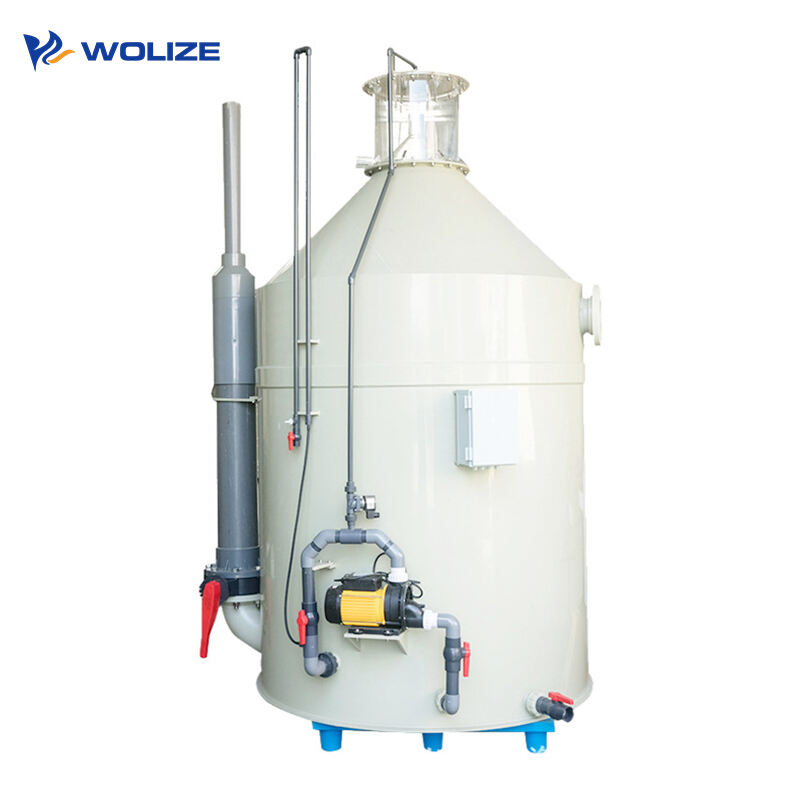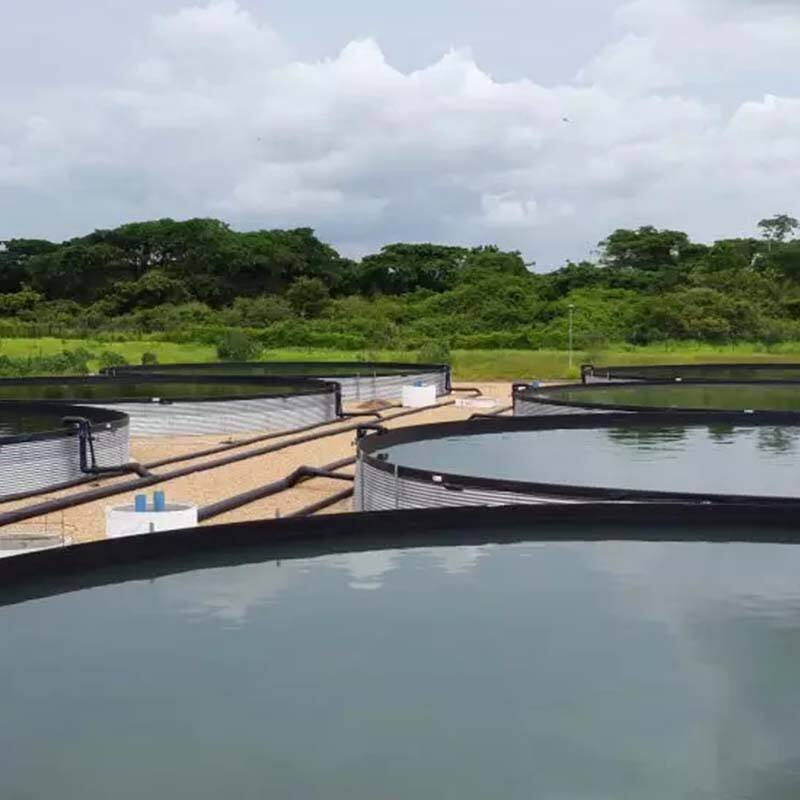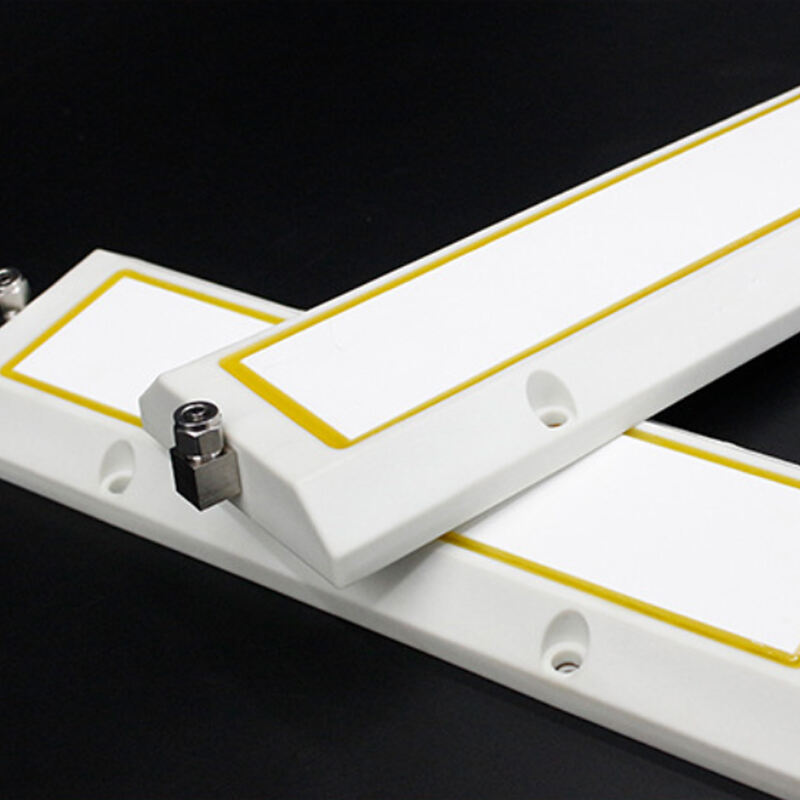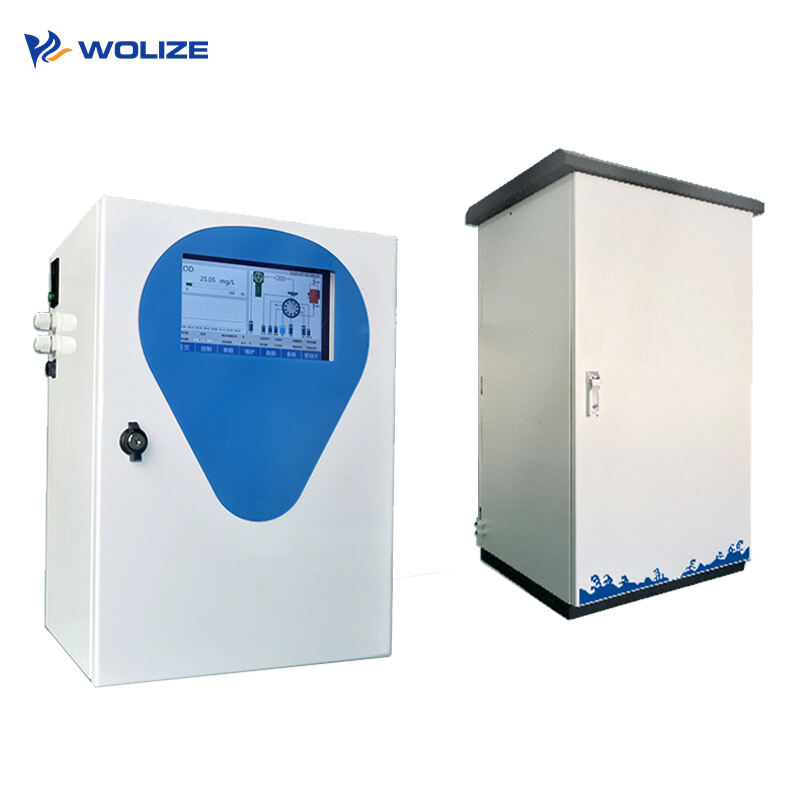Flow - through Aquaculture: A New Chapter in the Aquatic Farming Landscape
The Evolution of Flow - through Aquaculture
Flow - through aquaculture, also known as running - water aquaculture, is a method where a continuous supply of fresh water from a natural source such as a river, spring, or well is passed through the fish - rearing units. This fresh water brings in oxygen and removes waste products, creating a relatively stable and healthy environment for the aquatic organisms.
The origin of flow - through aquaculture can be traced back to ancient times. For example, in some mountainous regions with abundant spring water resources, local people began to build simple fish ponds along the streams and use the flowing spring water to raise fish thousands of years ago. In China, the practice of using flowing water from mountain springs to raise fish has a long - standing history. As early as the Song Dynasty, relevant records about mountain spring water fish farming can be found in some local chronicles, like the "Xin'an Zhi" (新安志) written by Luo Yuan in the Southern Song Dynasty, which described the mountain spring water fish - farming situation in the area at that time.
Over the centuries, with the development of human society and the continuous improvement of aquaculture technology, flow - through aquaculture has gradually evolved. In the past, the scale of flow - through aquaculture was relatively small, often limited to family - based small - scale operations, mainly using simple earthen ponds and natural water channels. The types of fish species raised were also relatively limited, mostly common freshwater fish species suitable for local water quality and climate conditions.
In modern times, with the advancement of science and technology, flow - through aquaculture has experienced significant changes. The application of modern engineering and equipment has improved the efficiency and productivity of flow - through aquaculture. High - quality materials are used to build fish - rearing ponds, which can better maintain water quality and prevent water leakage. Automatic water - quality monitoring equipment can continuously monitor parameters such as dissolved oxygen, pH value, and ammonia - nitrogen content in the water, enabling timely adjustment of water flow and water quality management. At the same time, the breeding of improved fish species and the improvement of feed quality have also contributed to the development of flow - through aquaculture, increasing the yield and quality of fish.
Nowadays, flow - through aquaculture plays a crucial role in the global aquaculture industry. It accounts for a significant proportion in the production of certain high - value fish species, especially in areas where suitable water resources are available. For example, in some regions rich in cold - water resources, flow - through aquaculture is widely used for the cultivation of trout and salmon, which require high - quality cold water environment. It not only provides a stable supply of aquatic products for the market but also promotes the development of related industries such as fish processing and sales, making important contributions to the economic development and food supply of many countries and regions.
The Upsides of Flow - through Aquaculture
High - yield and Cost - effective
One of the most prominent advantages of flow - through aquaculture is its high - yield potential. The continuous flow of water in this system provides several benefits that contribute to increased production. Firstly, the flowing water brings in a constant supply of oxygen. Oxygen is essential for the respiration of fish, and a higher oxygen level in the water allows fish to grow more vigorously. For example, in a flow - through trout farm, the well - oxygenated water enables the trout to have a faster metabolic rate, which in turn promotes their growth.
Secondly, the continuous water flow also brings in a fresh supply of food. As the water moves through the rearing units, it carries plankton and other natural food sources, supplementing the artificial feed provided. This additional food source helps the fish to gain more nutrients, leading to better growth and higher yields.
In terms of cost - effectiveness, flow - through aquaculture has several advantages. The efficient utilization of water and the relatively high stocking density mean that more fish can be produced per unit area. For instance, compared to traditional extensive earthen pond culture, flow - through systems can achieve a much higher yield per square meter. This higher yield per unit area effectively reduces the cost per unit of fish produced.
Moreover, the system helps to minimize feed waste. In a well - designed flow - through system, the water flow can be adjusted to ensure that the feed is evenly distributed and that fish can consume it efficiently. Since the uneaten feed is quickly carried away by the flowing water, there is less accumulation of waste feed in the rearing area, reducing the cost of feed and also preventing water pollution caused by decaying feed. Additionally, some flow - through aquaculture facilities are made of durable materials that can be reused for a long time, further reducing the long - term investment cost.
Water Quality and Environmental Protection
Flow - through aquaculture systems have a positive impact on water quality management. The continuous inflow of fresh water and the simultaneous removal of wastewater play a crucial role in maintaining good water quality. As fresh water enters the fish - rearing units, it dilutes any accumulated harmful substances such as ammonia, nitrite, and organic waste produced by the fish. These harmful substances, if allowed to accumulate, can be toxic to the fish and lead to stress, disease, and even death.
For example, ammonia is a common by - product of fish metabolism. In a static water system like a traditional earthen pond, ammonia can build up over time, especially in high - density 养殖 conditions. However, in a flow - through system, the flowing water quickly transports the ammonia out of the rearing area, keeping its concentration at a safe level for the fish.
This constant water exchange also helps to maintain stable water temperature and pH levels. The fresh water flowing in has a relatively stable temperature and pH, which can buffer any sudden changes in the rearing environment. For instance, in summer, when the outside temperature is high, the cool incoming water can prevent the water in the fish - rearing units from overheating, providing a more comfortable environment for the fish.
From an environmental protection perspective, flow - through aquaculture is a more sustainable option compared to some traditional aquaculture methods. Since the wastewater is continuously removed and can be treated separately, it reduces the potential for pollution of surrounding natural water bodies. In contrast, earthen pond aquaculture often discharges untreated or poorly treated wastewater directly into nearby rivers or lakes, which can cause eutrophication and damage to the aquatic ecosystem.
Furthermore, some advanced flow - through aquaculture systems are designed to recycle water. After the wastewater is treated to remove impurities and harmful substances, it can be reused in the aquaculture process. This not only reduces the demand for fresh water but also minimizes the environmental impact of the aquaculture operation.
Accelerated Growth and Enhanced Quality
The flowing water in flow - through aquaculture systems stimulates the fish's metabolism, which in turn accelerates their growth rate. When fish are in a flowing - water environment, they need to constantly swim to maintain their position, which is a form of exercise. This exercise increases their muscle activity and metabolic rate. Just like how regular exercise helps humans to be more energetic and healthy, the physical activity of fish in flowing water makes them more robust and promotes their growth.
For example, studies have shown that salmon raised in flow - through systems grow faster than those in static water ponds. The constant water flow forces the salmon to swim against the current, which strengthens their muscles and improves their digestion and nutrient absorption capabilities. As a result, they can convert the feed into body mass more efficiently, achieving faster growth.
In addition to growth rate, the quality of the fish produced in flow - through systems is also often enhanced. The clean and well - oxygenated water, along with the stable environmental conditions, create a favorable living environment for the fish. In such an environment, fish are less stressed, which can lead to better - quality meat. The meat of fish raised in flow - through systems is usually firmer, has a more pleasant taste, and higher nutritional value. For example, the omega - 3 fatty acid content in fish raised in high - quality flow - through systems is often higher, which is beneficial for human health. The reduced stress on the fish also means that they are less likely to be affected by diseases, reducing the need for antibiotics and other medications, making the fish a more healthy and safe food choice for consumers.
Flow - through Aquaculture vs. Earthen Pond Aquaculture: A Comparative Analysis
Growth Environment
In flow - through aquaculture, the growth environment is highly controllable. The water temperature can be regulated to a certain extent according to the requirements of the cultured species. For example, in a flow - through salmon farm, the water temperature can be maintained at around 10 - 15°C, which is the optimal temperature range for salmon growth. The continuous supply of fresh water ensures high - quality water, with low levels of pollutants and a stable pH value. Abundant dissolved oxygen is also a characteristic of flow - through systems, as the flowing water continuously replenishes oxygen, which is beneficial for the growth and health of fish.
In contrast, earthen pond aquaculture is greatly influenced by the natural environment. The water temperature in earthen ponds changes with the seasons and daily weather conditions. In summer, the water temperature in ponds may rise too high, exceeding the suitable temperature range for some fish species, which can cause stress to the fish and affect their growth. The water quality in earthen ponds is also more difficult to control stably. The water is in contact with the soil at the bottom of the pond, and substances in the soil may dissolve into the water, affecting the water quality. For example, the release of nutrients from the soil may lead to excessive algal blooms in the pond, which can cause oxygen depletion at night and harm the fish. Additionally, the dissolved oxygen in earthen ponds is mainly provided by natural aeration and photosynthesis of aquatic plants. In bad weather conditions such as continuous cloudy days, the photosynthesis of aquatic plants is inhibited, resulting in insufficient dissolved oxygen in the pond water, endangering the survival of fish.
Management Difficulty
Flow - through aquaculture requires relatively high - level management skills and professional equipment. Firstly, the operation and maintenance of water - flow control equipment, water - quality monitoring instruments, and feed - delivery systems need trained personnel. For example, the water - flow rate needs to be adjusted according to the growth stage of the fish and the water - quality situation. If the water - flow rate is too high, it may cause excessive energy consumption for the fish to swim against the current, while if it is too low, it may not be able to effectively remove waste and maintain water quality.
Secondly, dealing with potential problems in the system, such as equipment failures and sudden water - quality changes, requires quick response and professional knowledge. In case of a malfunction of the water - quality monitoring instrument, timely detection and repair are needed to ensure that the water quality is always under control.
On the other hand, earthen pond aquaculture is relatively simpler in some aspects of management. The infrastructure of earthen ponds is relatively basic, mainly relying on natural conditions such as sunlight and rainfall to a certain extent. However, it also has its own management challenges. Controlling water quality in earthen ponds is a complex task. Regular water - quality testing and the use of water - quality improvement agents are often required. For example, using lime to adjust the pH value of the water and probiotics to improve the water - quality environment. Disease prevention and control in earthen ponds are also difficult. Due to the relatively open environment of earthen ponds, fish are more likely to be infected by pathogens from the outside. Once a disease breaks out, it is often difficult to isolate and treat the affected fish quickly, and the disease may spread rapidly in the pond, resulting in significant losses.
Economic Benefits
Flow - through aquaculture usually has high yields due to its favorable growth environment and efficient management. High - value fish species can be cultured in flow - through systems, and the high - density stocking and fast - growth characteristics of the fish can bring high economic returns. For example, in a well - managed flow - through sturgeon farm, the annual yield per unit area can be relatively high, and sturgeon products such as caviar and sturgeon meat are in high demand in the market, fetching high prices. However, the investment in flow - through aquaculture is also large. The construction of facilities, the purchase of equipment, and the cost of daily operation and management, including electricity consumption for water circulation and water - quality treatment, are relatively high. But overall, for high - value fish farming, the high - cost input can be offset by high - value outputs, bringing good economic benefits.
Earthen pond aquaculture has lower investment costs. The construction of earthen ponds is relatively simple, and the equipment required is not as sophisticated as that of flow - through aquaculture. The cost of land lease and basic facilities is relatively low. However, the yield of earthen pond aquaculture is often limited by natural conditions and the relatively extensive management mode. The stocking density of fish in earthen ponds cannot be too high to avoid water - quality deterioration and disease outbreaks. Therefore, the overall economic income is relatively lower than that of flow - through aquaculture for high - value fish species. Moreover, the price of the products from earthen pond aquaculture is often more affected by market fluctuations. Since the quality and growth rate of fish in earthen ponds may vary more due to natural factors, it is more difficult to maintain stable product quality, which may lead to greater price fluctuations and relatively unstable economic benefits.
Conclusion: The Future of Flow - through Aquaculture
In conclusion, flow - through aquaculture has a long - standing history and has continuously evolved into a modern and efficient aquaculture method. Its advantages, including high - yield potential, cost - effectiveness, excellent water - quality management, environmental - protection features, and the ability to accelerate fish growth and enhance product quality, make it a highly promising aquaculture approach.
When compared with earthen pond aquaculture, flow - through aquaculture shows distinct superiority in terms of growth - environment control, although it also has higher management requirements. In terms of economic benefits, while the initial investment is large, the high - value outputs of flow - through aquaculture for certain species can bring substantial returns.
Looking ahead, with the continuous development of technology, flow - through aquaculture is expected to achieve even greater progress. The integration of more advanced automation and intelligent control systems will further improve management efficiency and reduce labor costs. For example, artificial - intelligence - based water - quality prediction models may be developed to more accurately adjust water - flow rates and water - quality parameters in real - time.
In addition, in the context of global sustainable development, the environmental - friendly features of flow - through aquaculture will make it more and more popular. As consumers' demand for high - quality and sustainable aquatic products continues to grow, flow - through aquaculture, which can produce healthy and high - quality fish with less environmental impact, will play an increasingly important role in meeting this market demand. It is foreseeable that flow - through aquaculture will have a broader development space in the future global aquaculture industry, contributing to the sustainable supply of aquatic products and the development of the aquaculture economy.
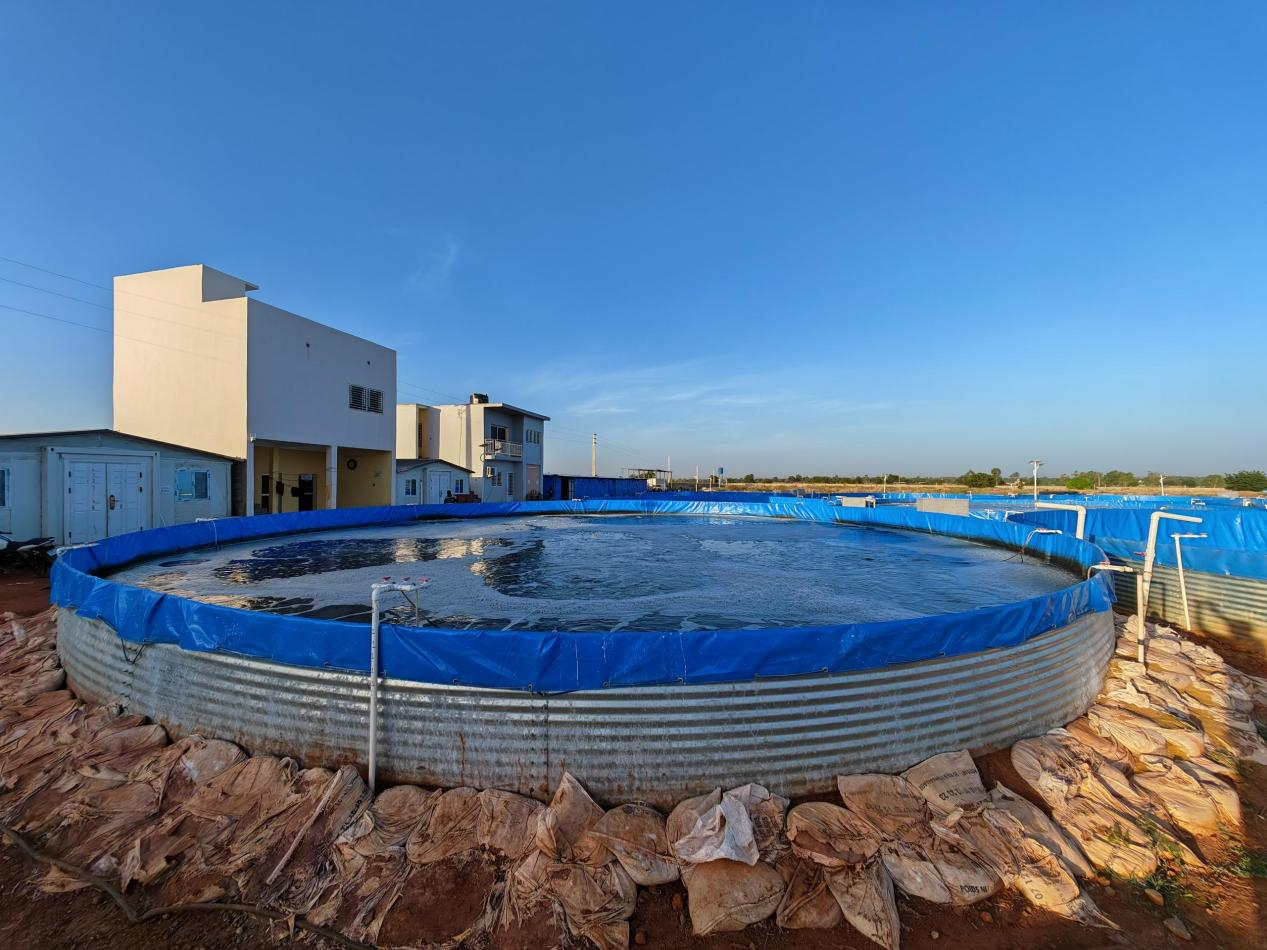
Recommended Products
Hot News
-
The Christmas discount has arrived
2024-12-26
-
Is it true that raising fish in high-density canvas fish ponds is more efficient than ordinary ponds?
2024-12-16
-
Advantages of galvanized canvas fish pond
2024-10-14
-
High-density fish farming technology, fish pond cost, canvas fish pond, canvas pond, high-density fish farming
2024-10-12
-
Why choose flowing water high-density aquaculture
2023-11-20












































